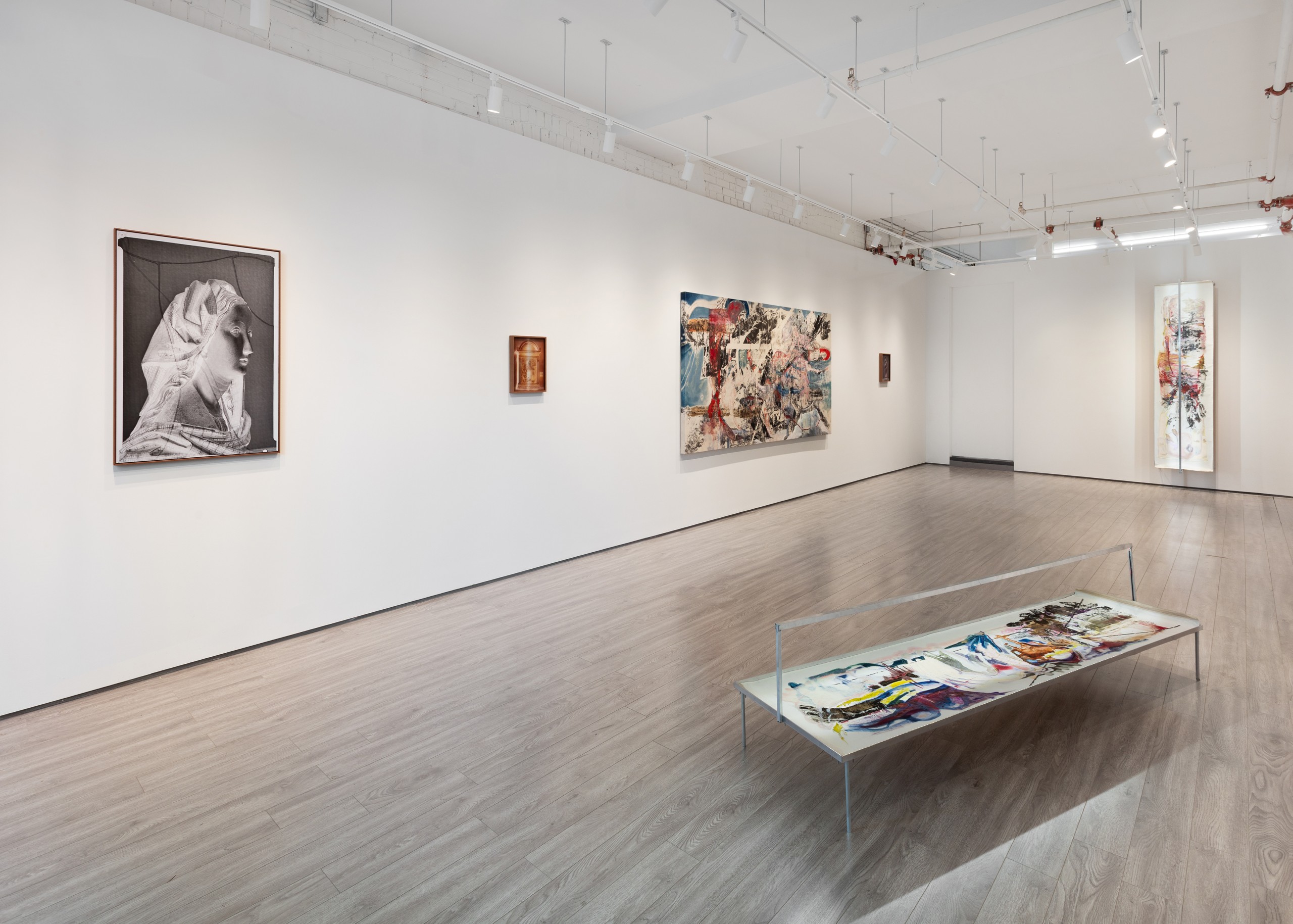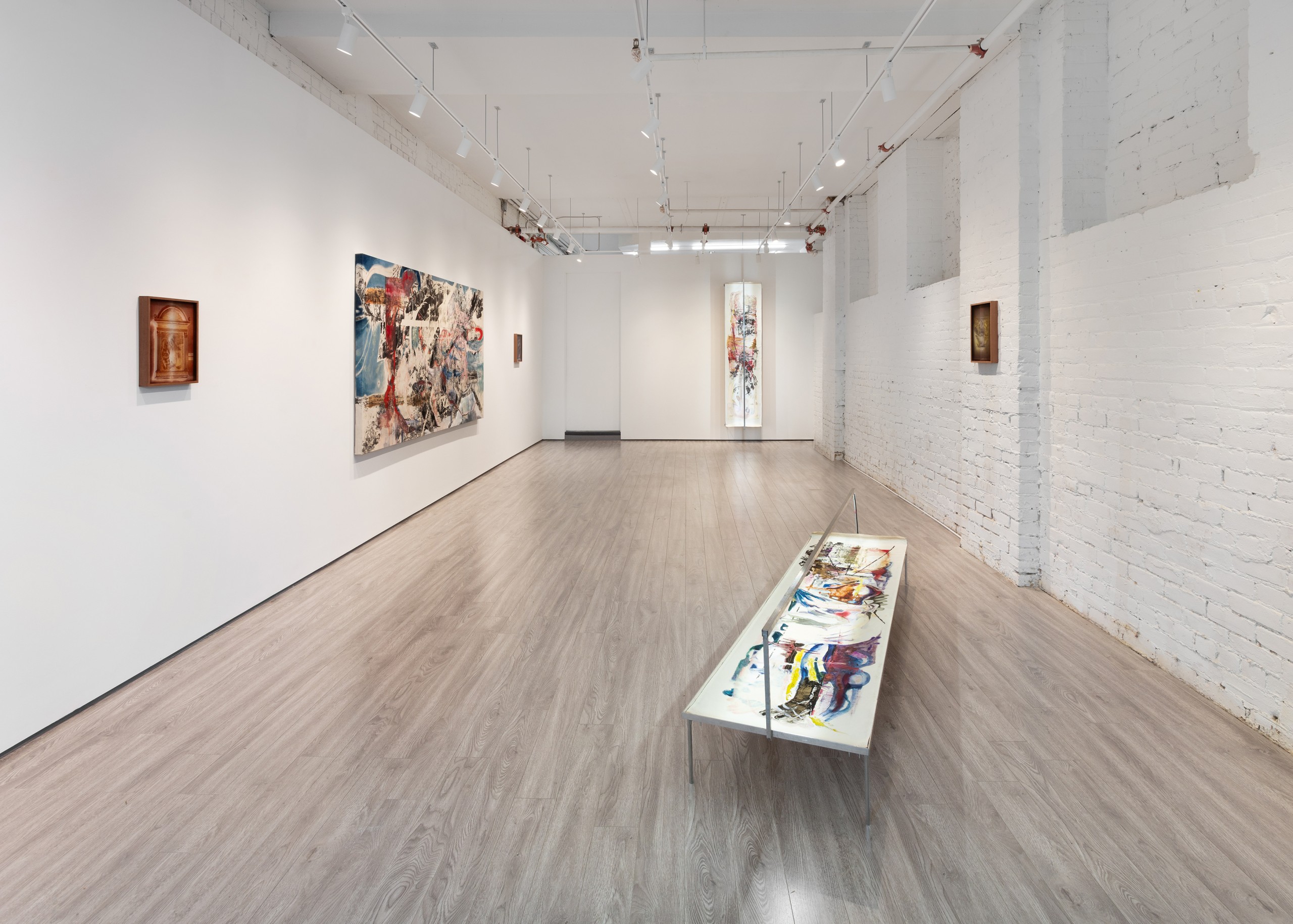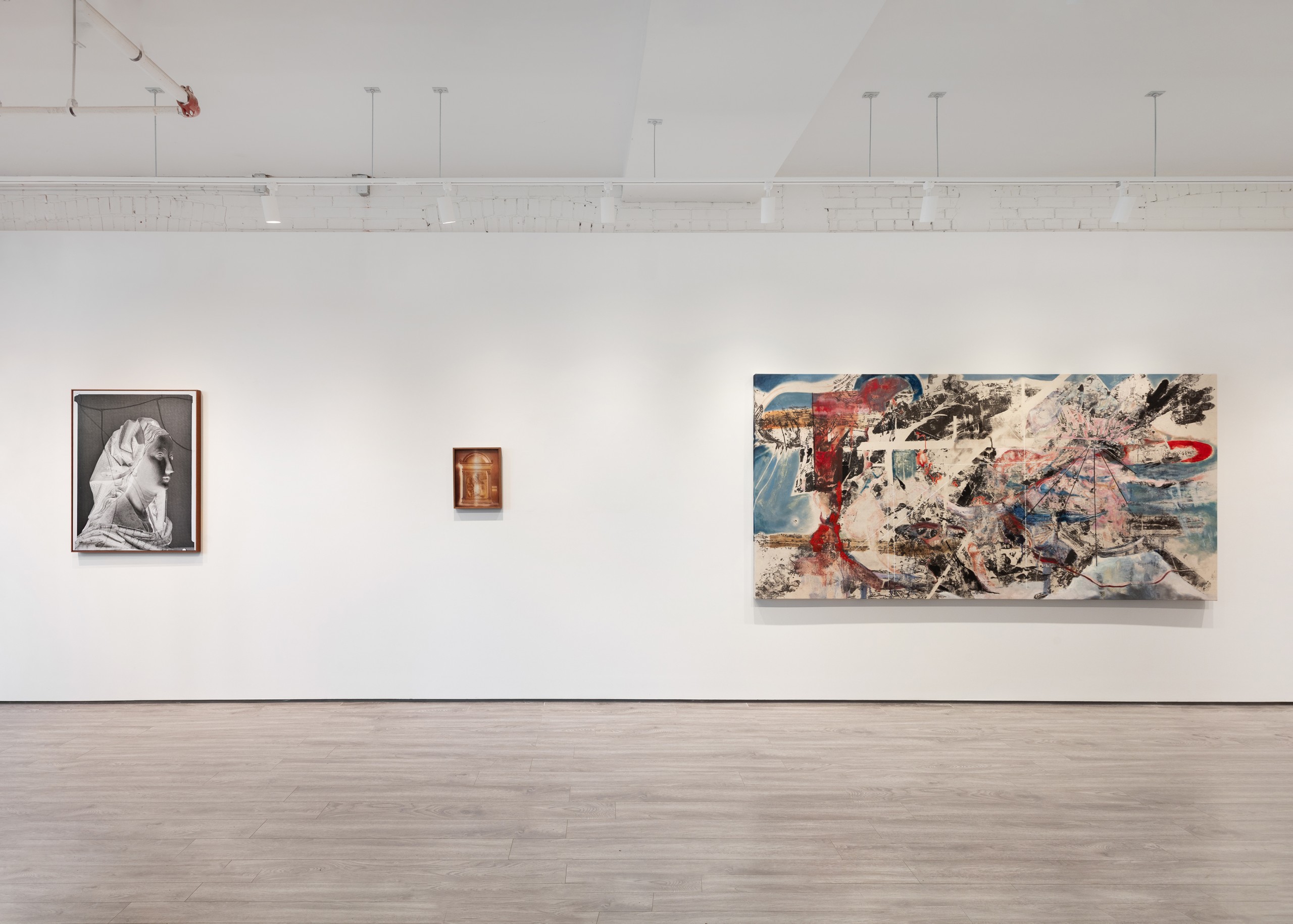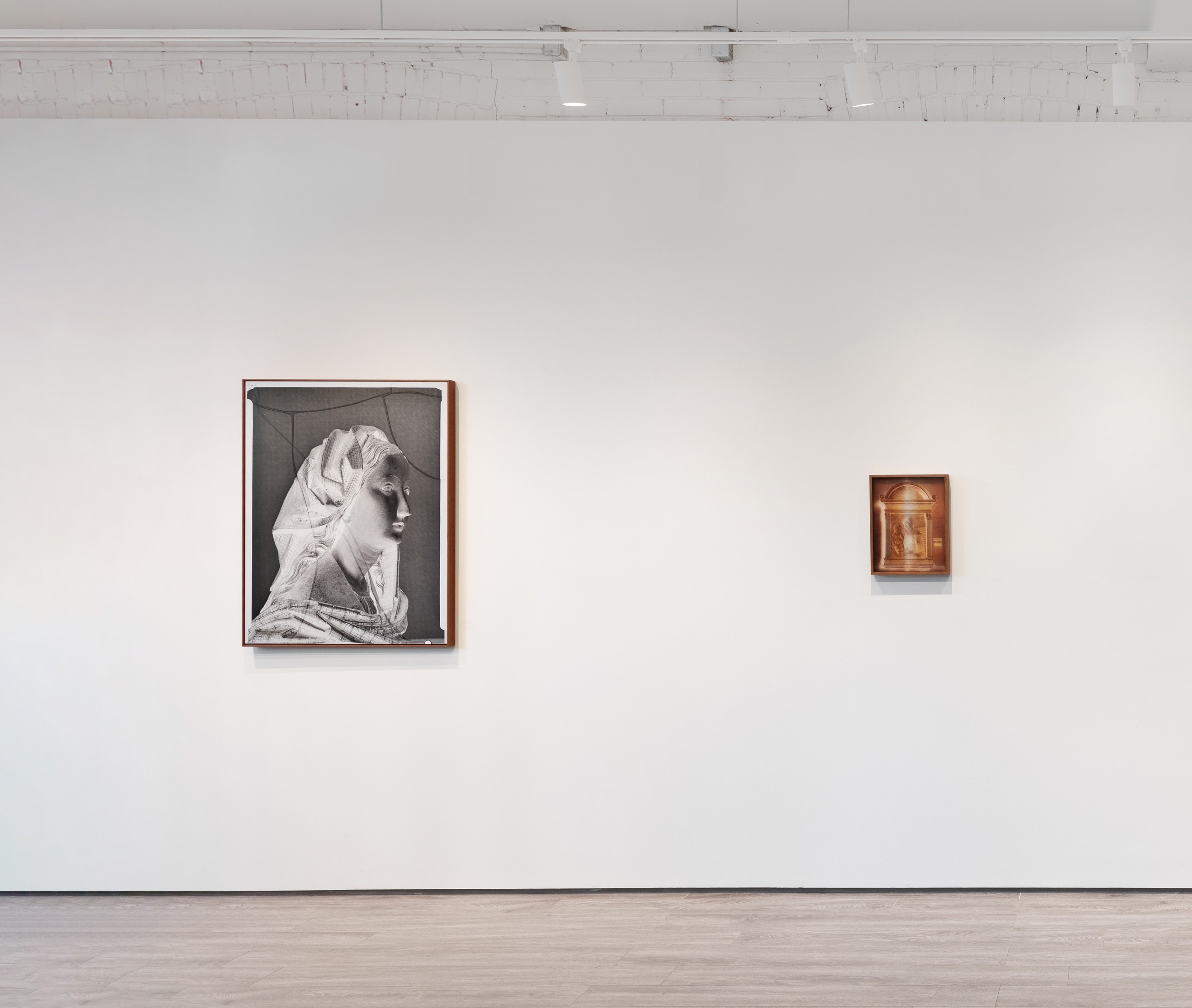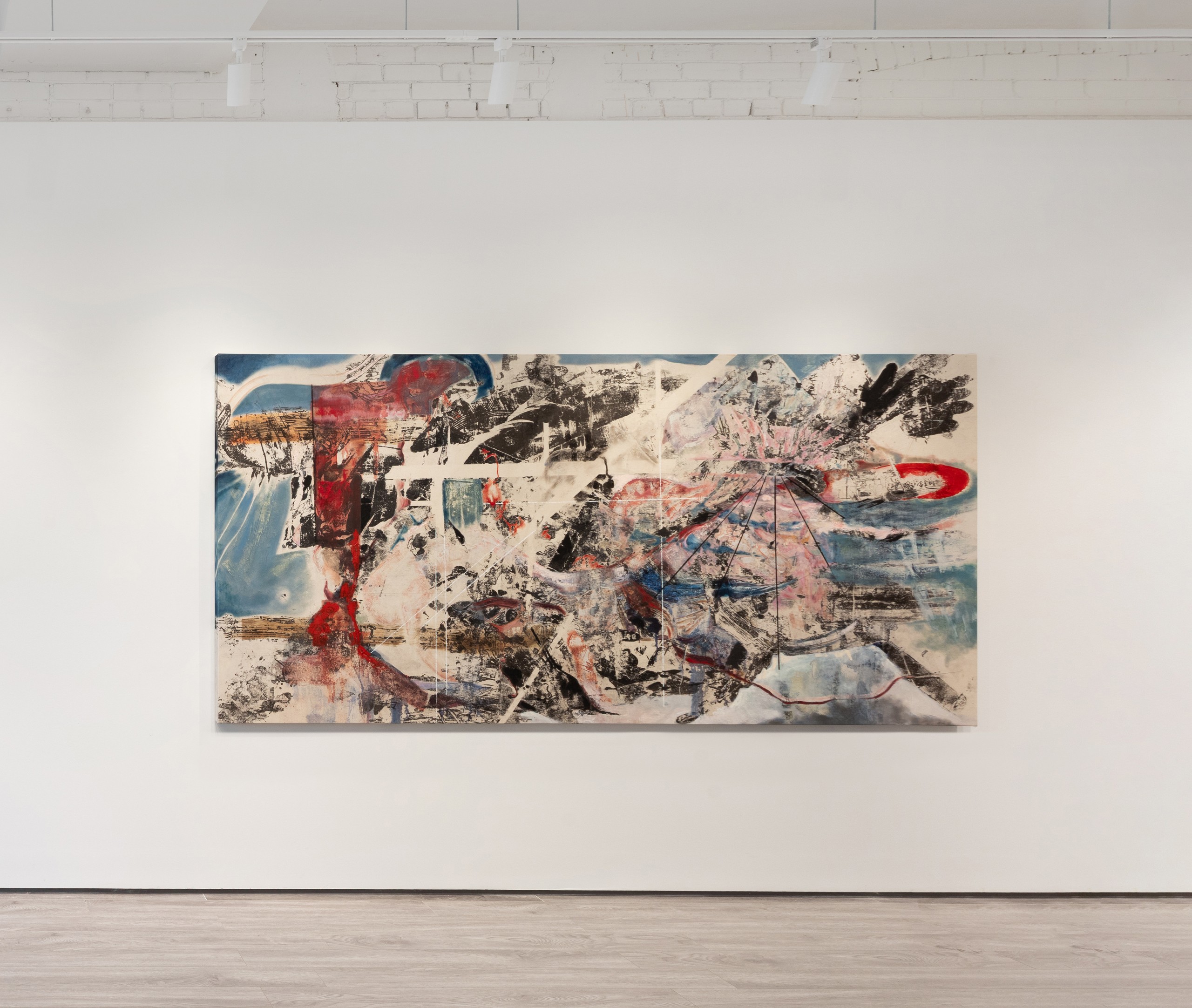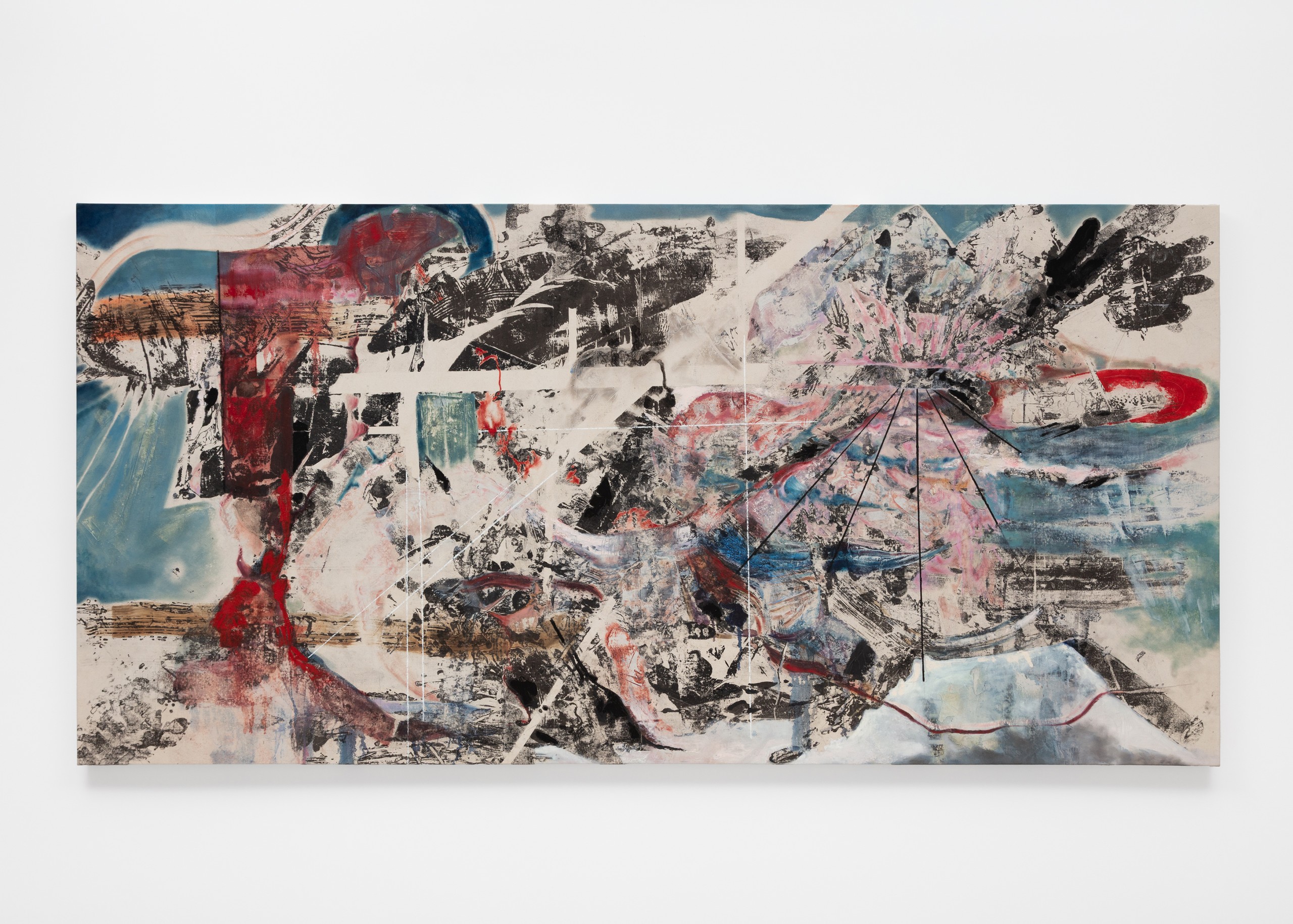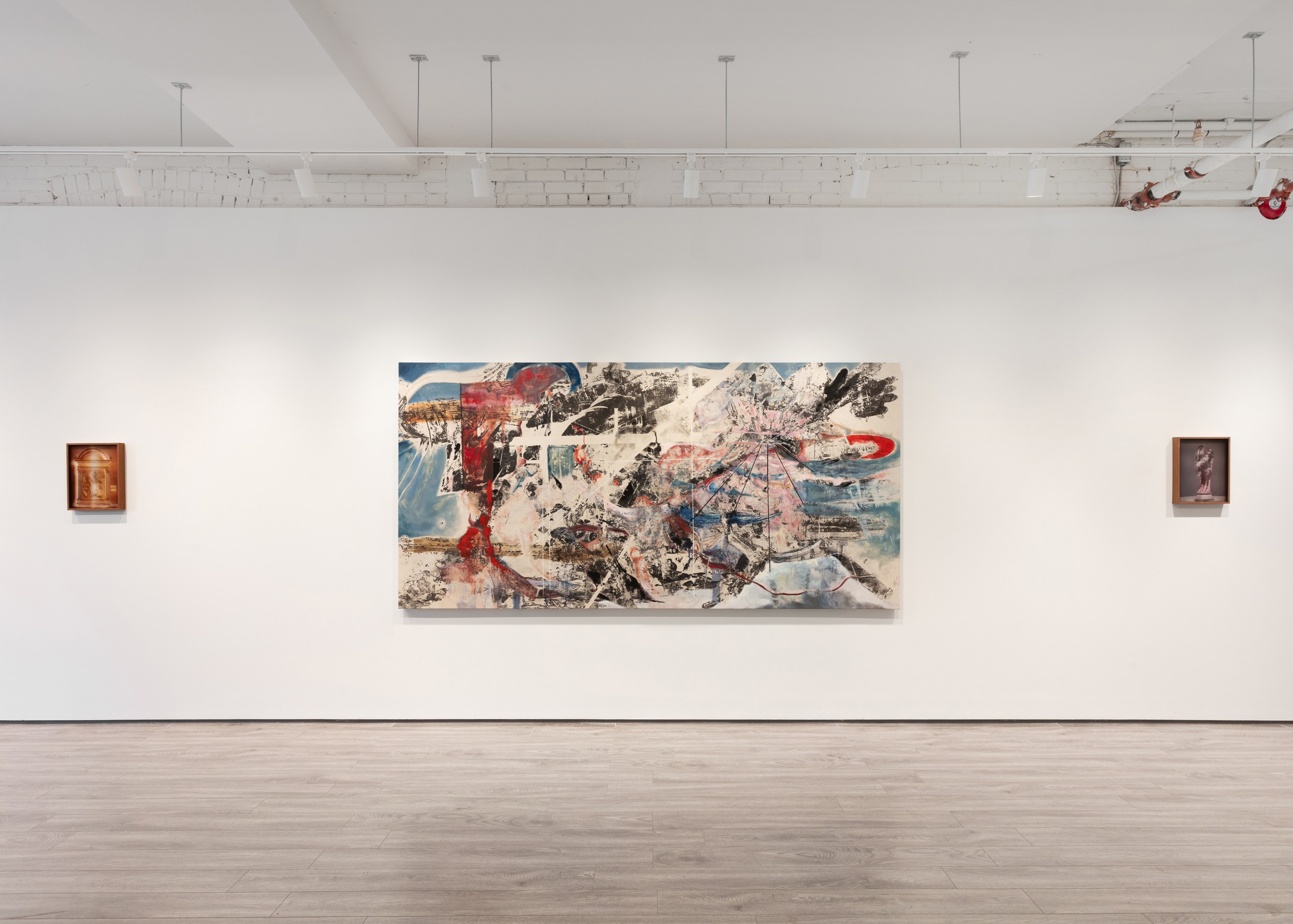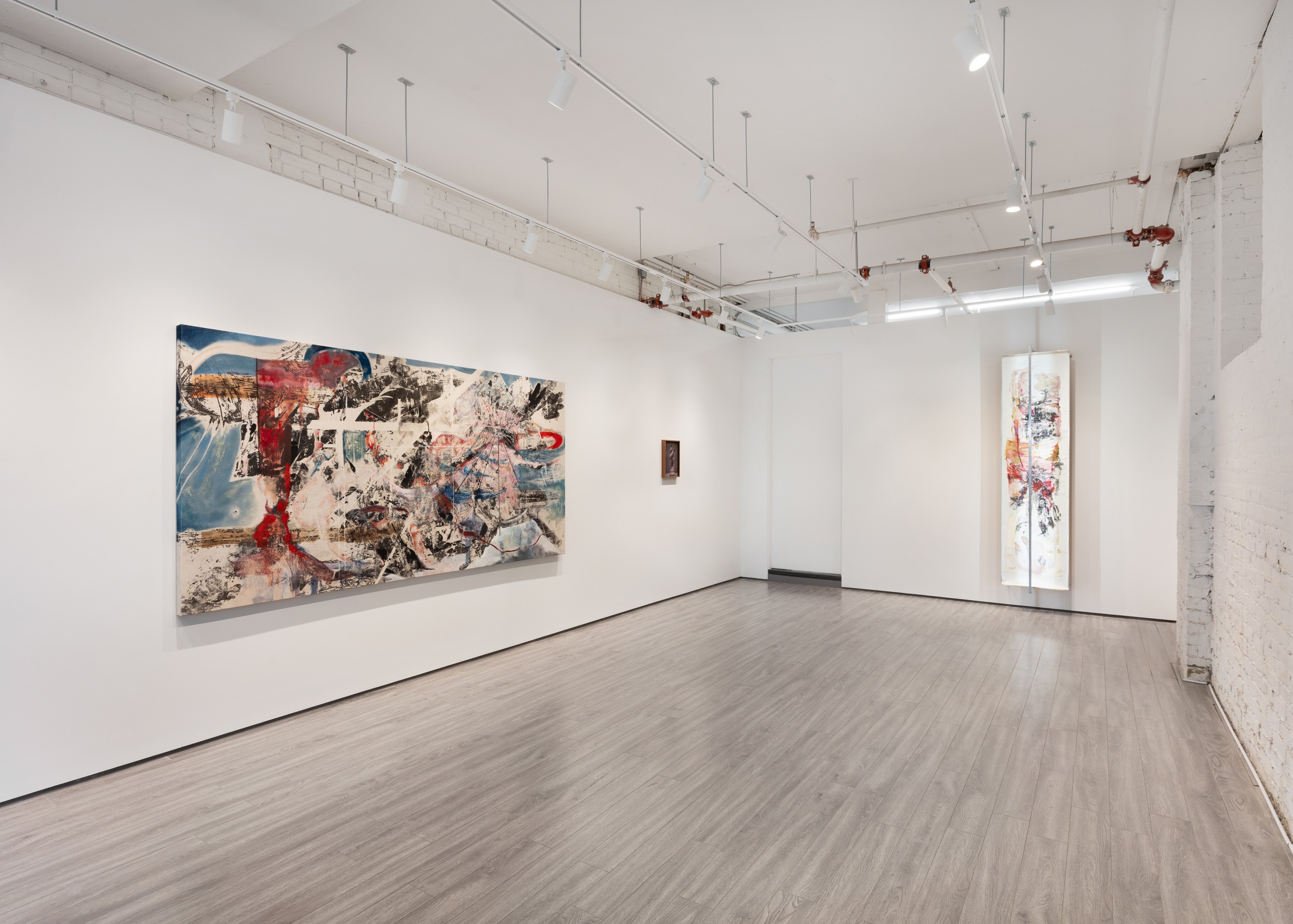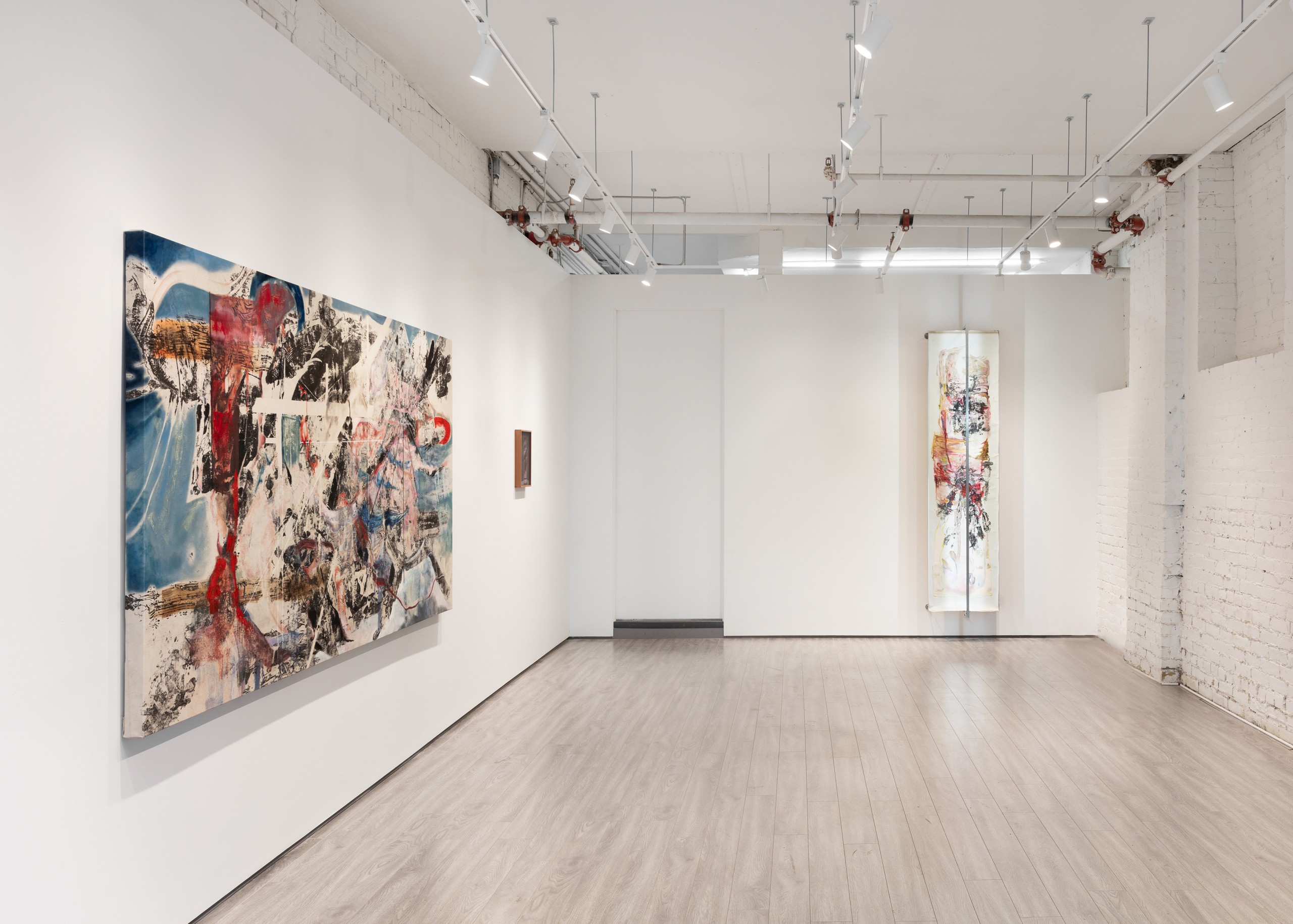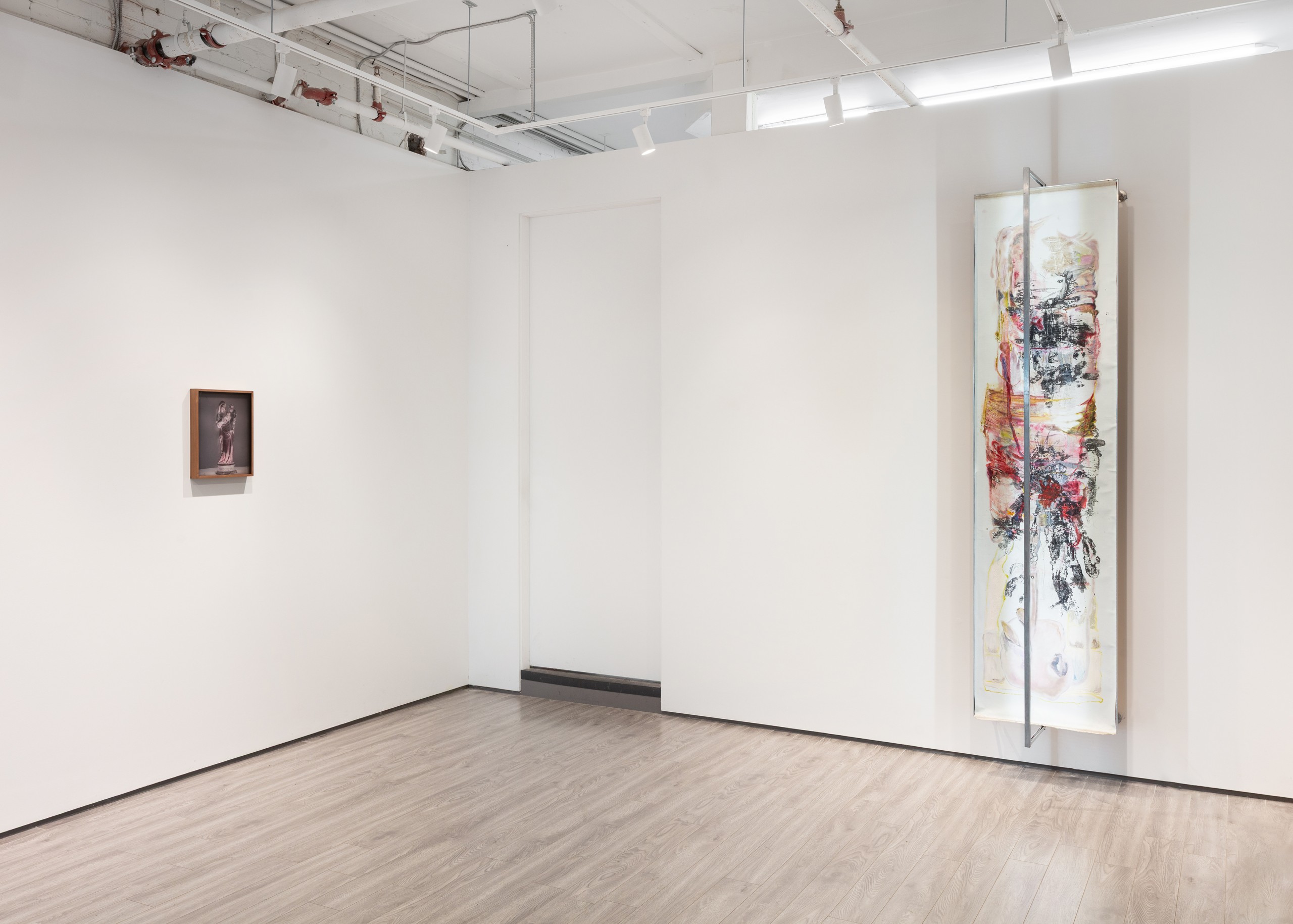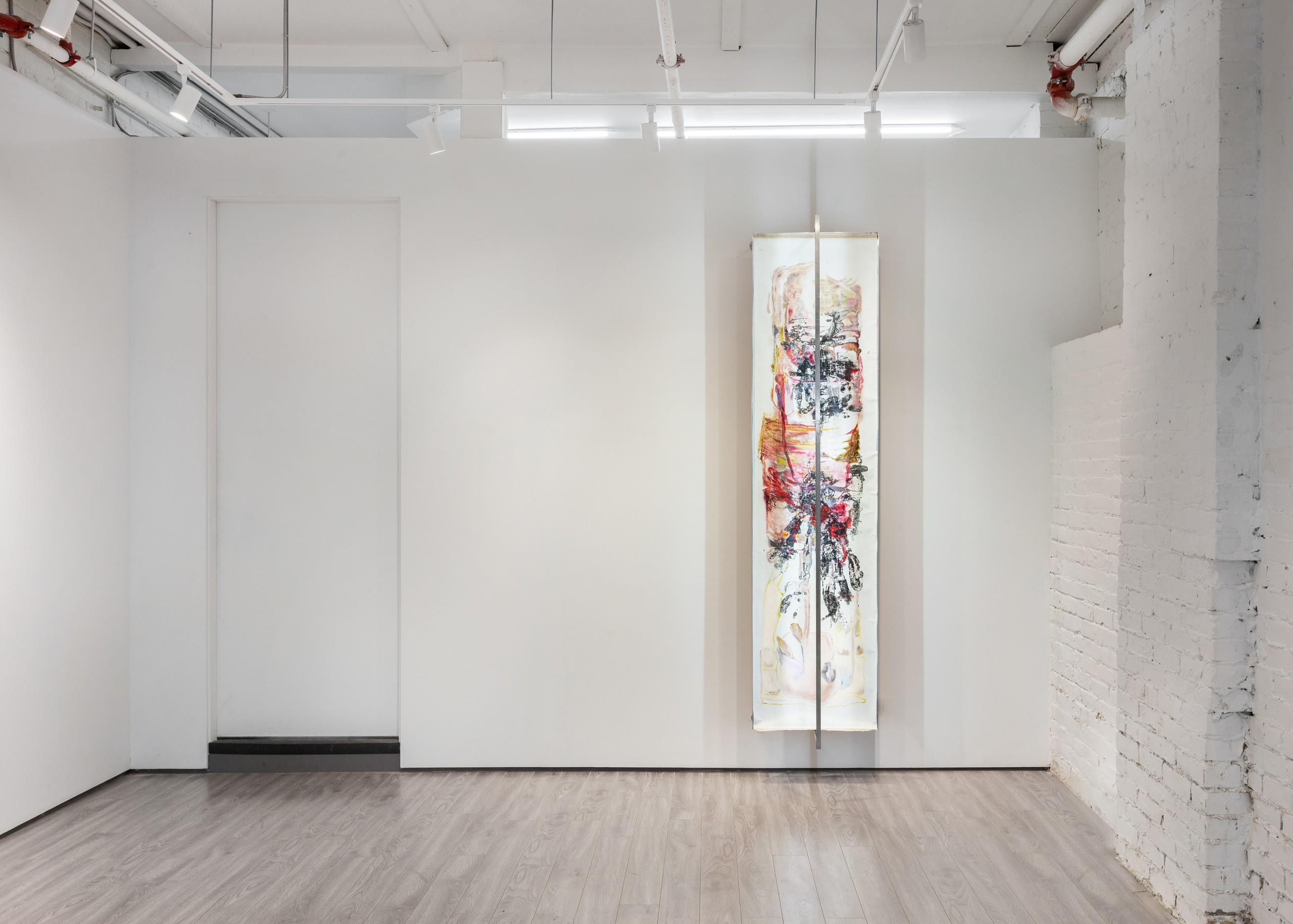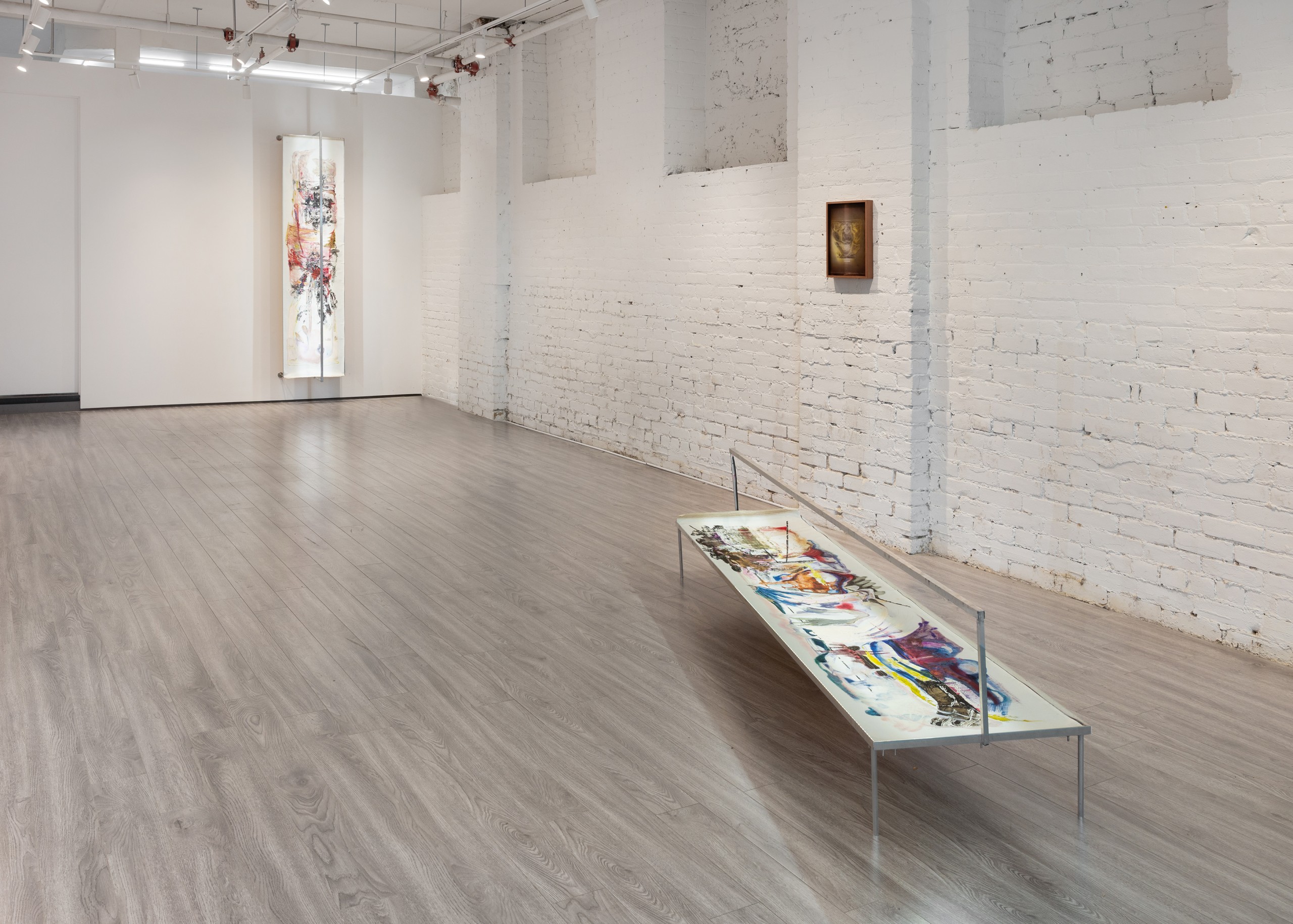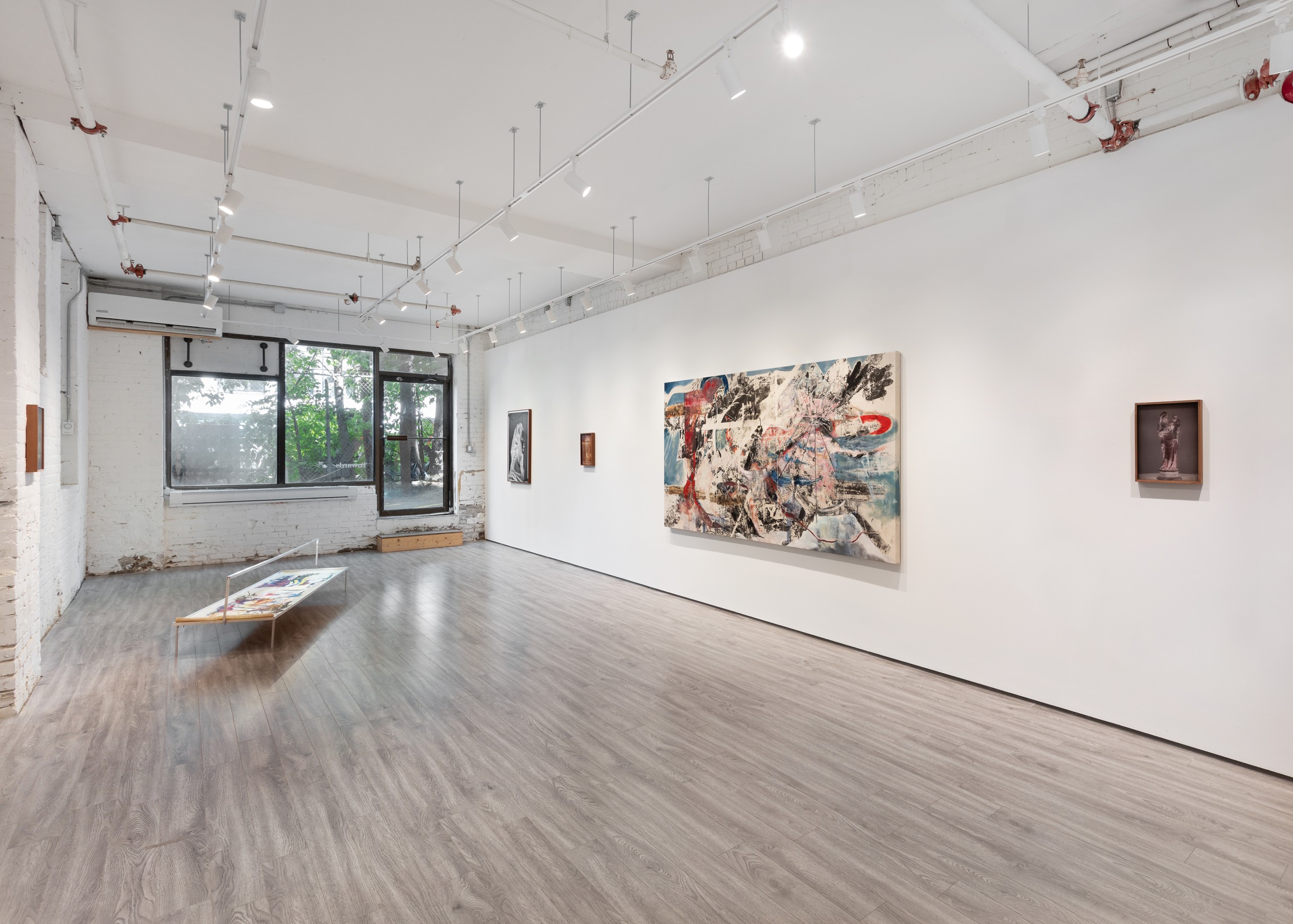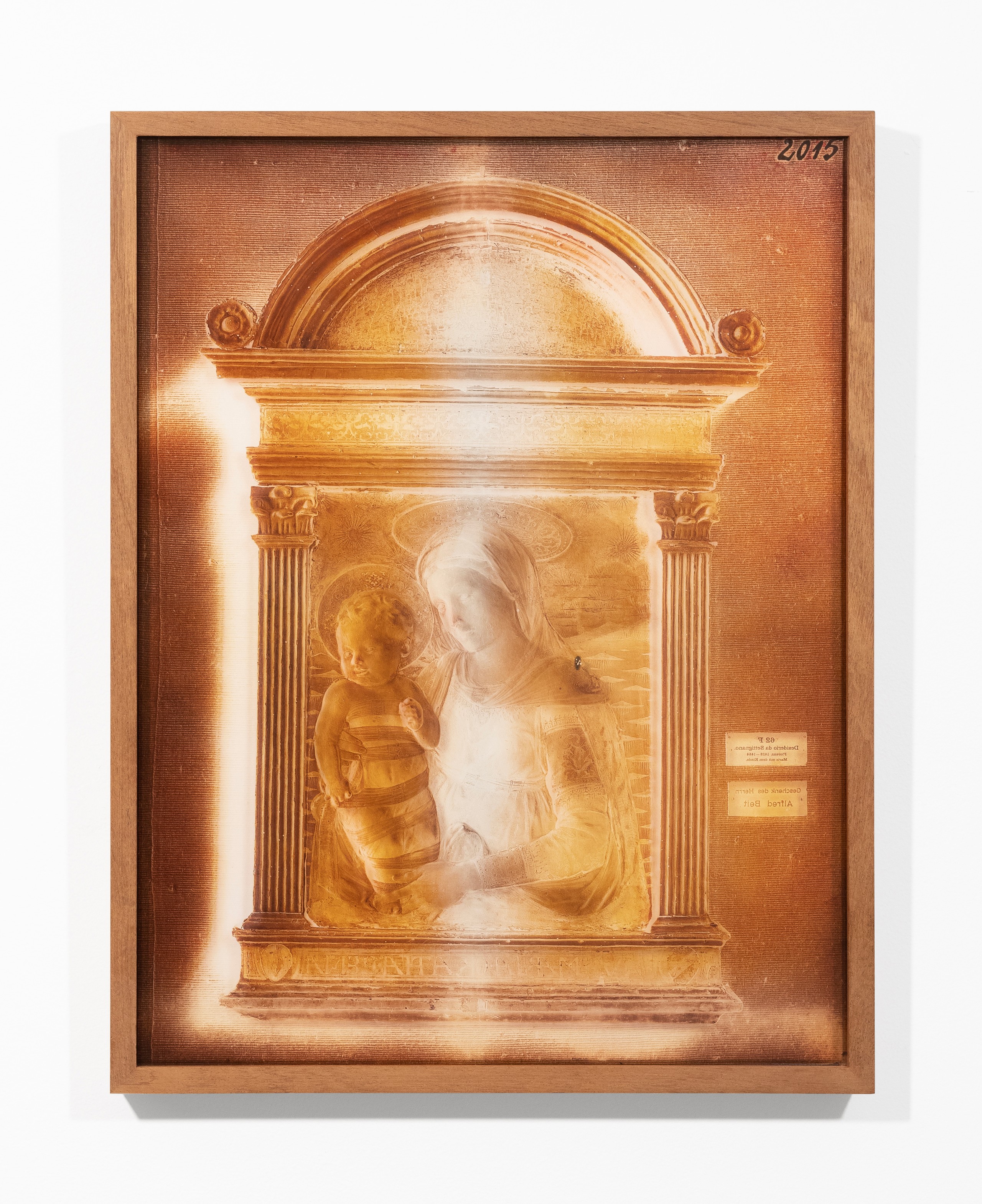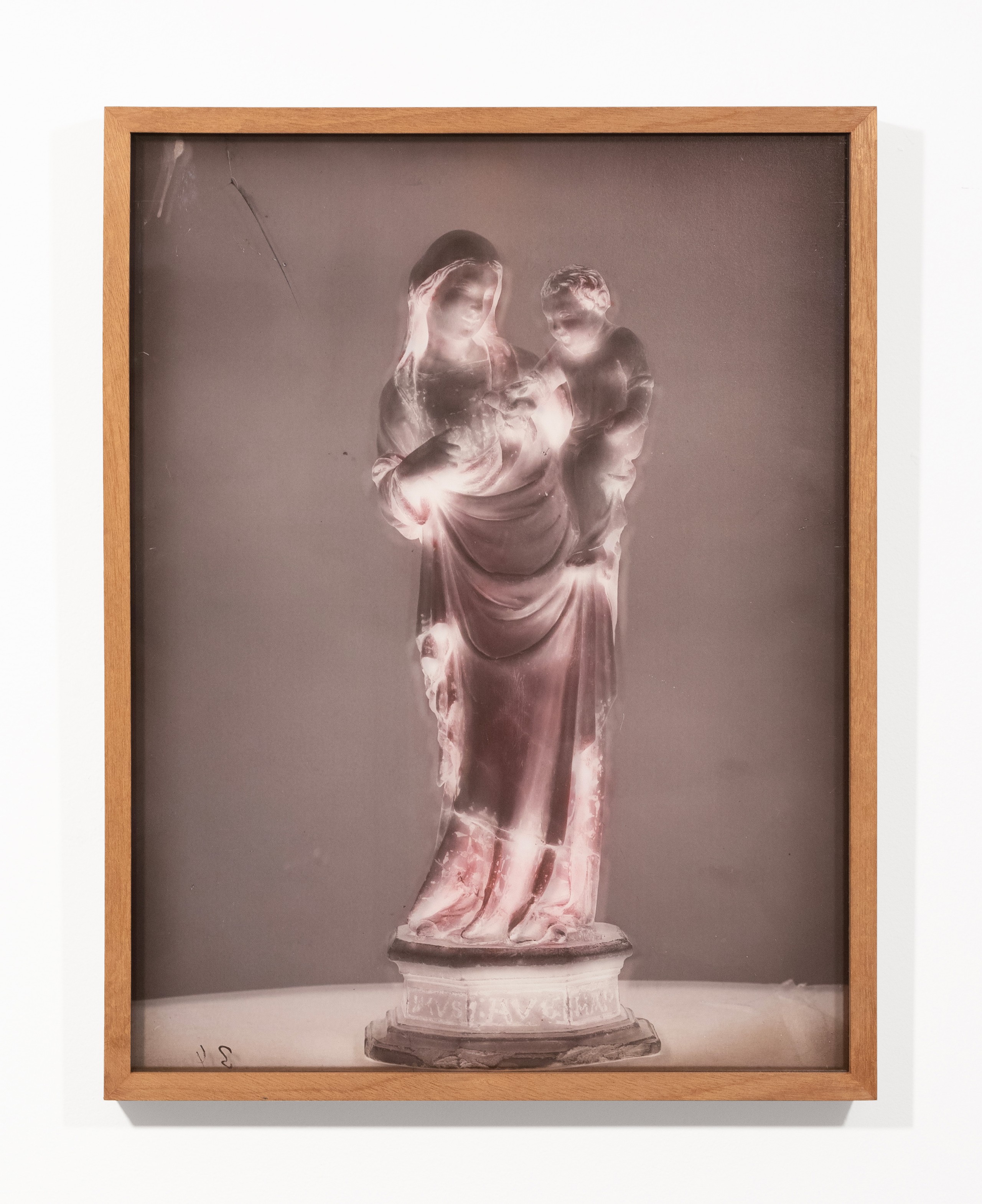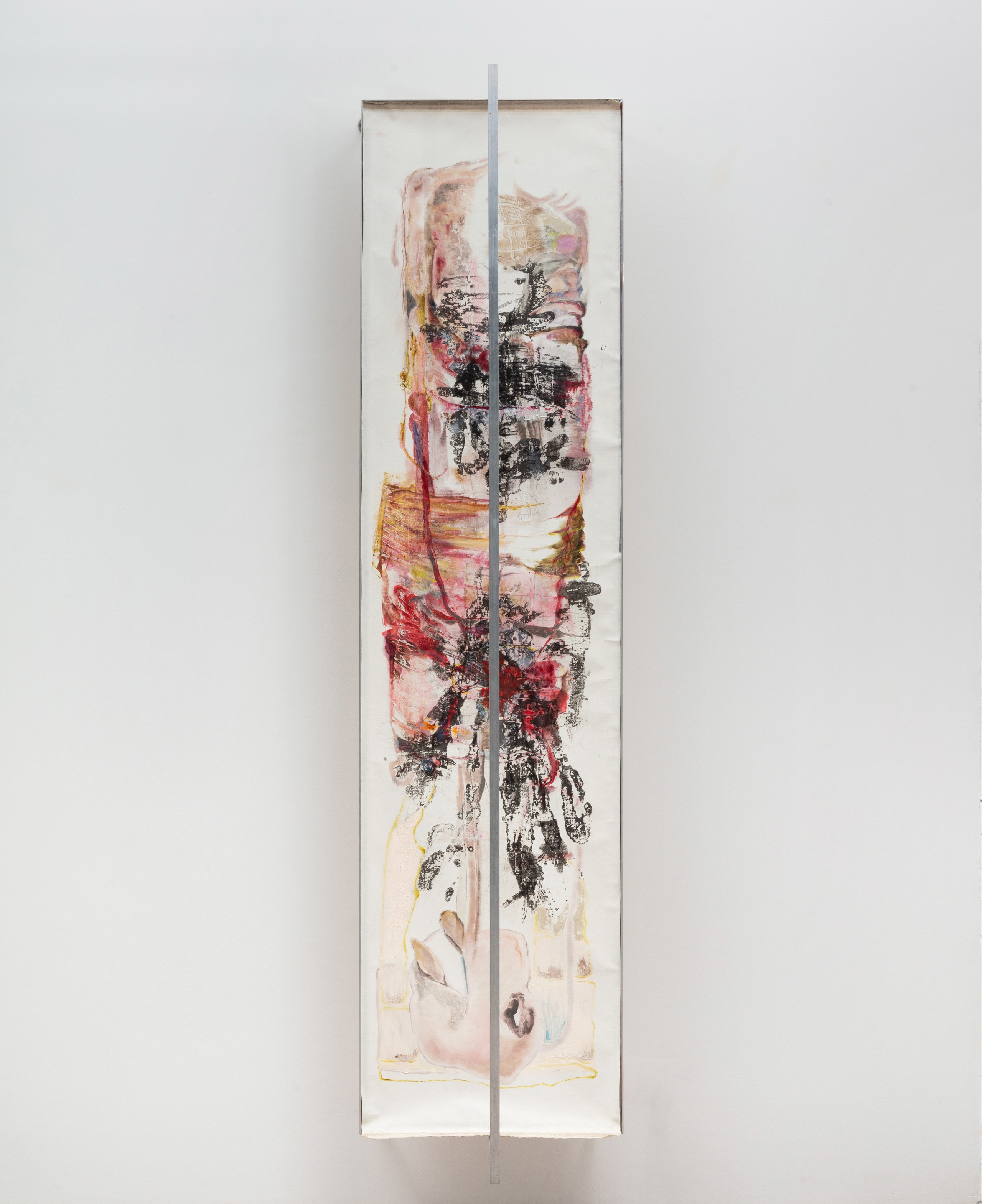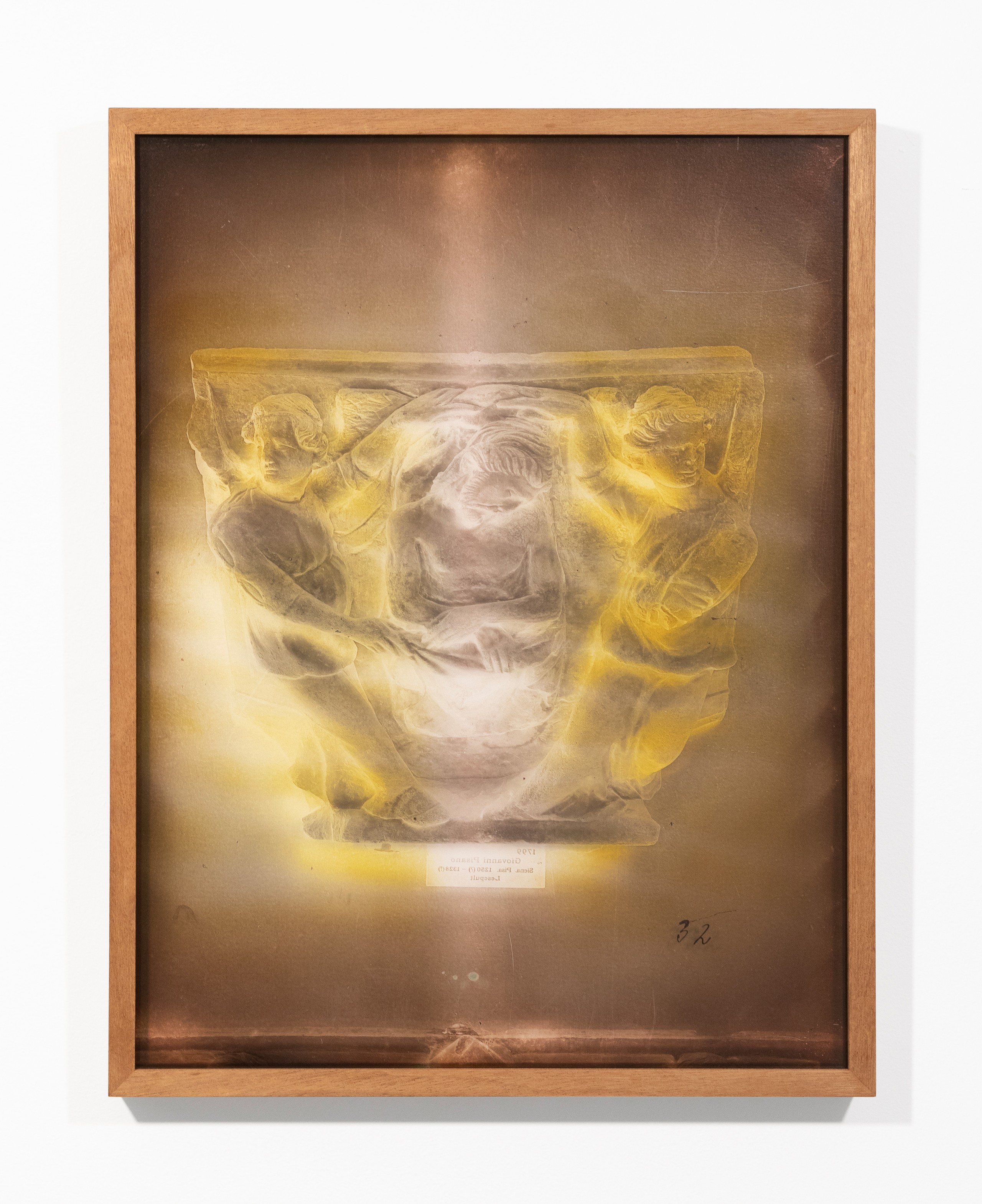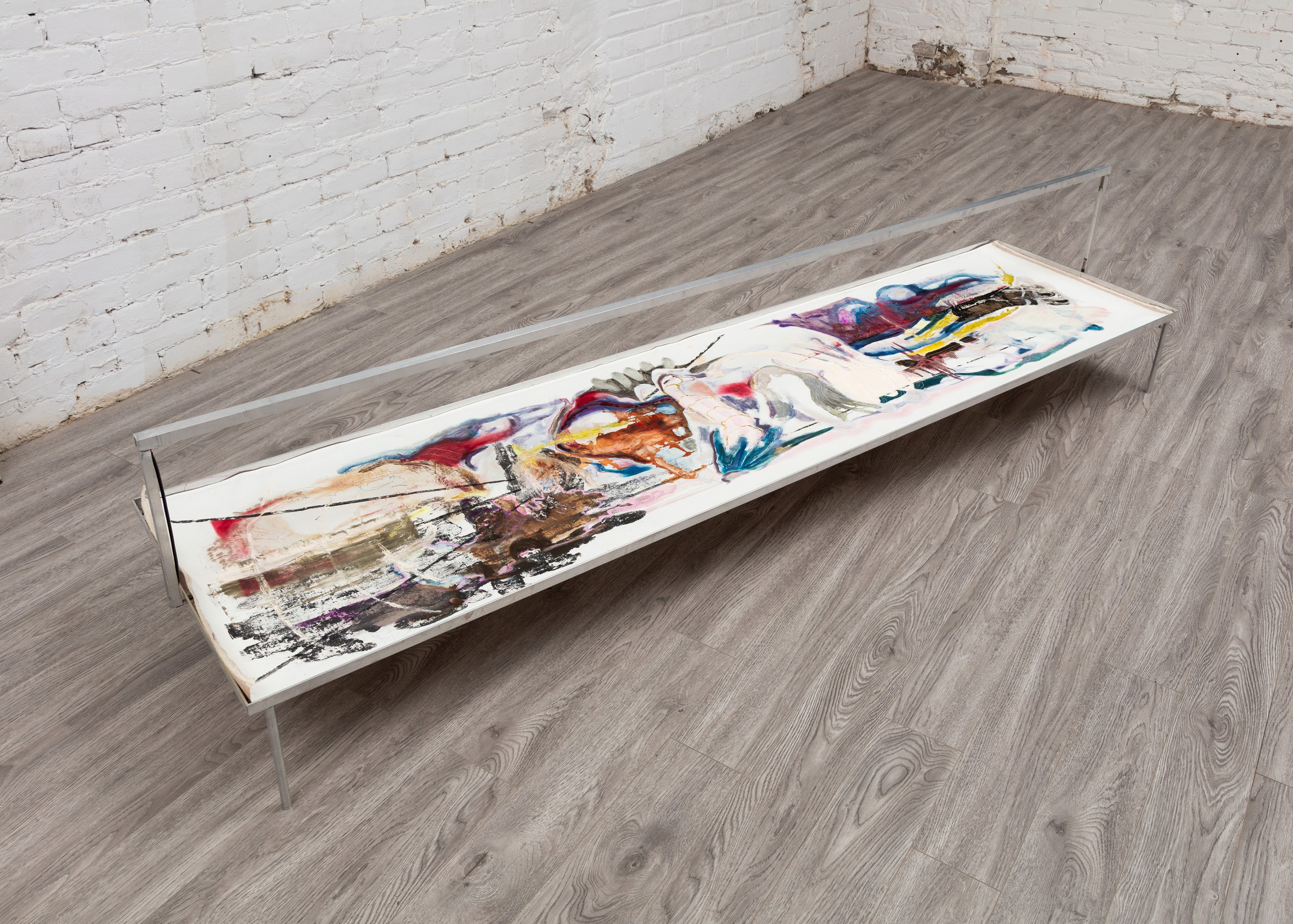Towards is pleased to present What Remains, a two-person exhibition of work by Alixe Turner and
Maria Trabulo.
Working across painting, sculpture, film, and installation, the two artists explore themes of memory, forgotten histories, and the ways in which we render the invisible, visible.
Alixe Turner’s practice examines cultural memory and personal indexes of her past experiences, interrogating the ideological frameworks that render people and landscapes invisible. Drawing upon her previous experience as a field researcher, she explores how mapping, archiving, and image-making are used to impose a sense of order and structure on an otherwise chaotic world – often at the expense of marginalized bodies and geographies. Turner’s large-scale paintings are reminiscent of topography – evoking fractured landscapes and dispersed memories while occupying spaces both real and imagined.
Working intuitively, she slowly builds up the surface of her canvases to create densely layered, textural works imbued with their own ongoing sense of transformation. Turner uses the grid as both a compositional and conceptual structure, invoking the visual authority of maps while simultaneously undermining their claim to objectivity. The resulting work resists easy categorization, instead embracing rupture, residue, and material instability as strategies to challenge dominant narratives and make visible what is often left unseen.
Maria Trabulo’s multi-disciplinary practice explores the role that images and artifacts play in shaping both our personal and collective memory. Her work examines the ways in which artifacts accrue meaning, and the ways in which that meaning is in a continuous state of flux.
Trabulo’s works in What Remains were initiated as part of a residency at the Bode Museum, Berlin in 2024. Working alongside museum conservators and staff, Trabulo documented and catalogued various artifacts that were either damaged or disappeared as a result of the second world war.
The last known images of many of these artworks and artifacts date to the 1920’s, when the museum undertook a cataloguing of the collection. Statues, coins, and artworks spanning from the 7th century BCE through the Byzantine Empire, the Renaissance into the 18th century were photographed for records to be made.
Today, the photo negatives for the over 700 works from the Bode Museum that were either destroyed or disappeared during the second world war are all that remains. Despite having survived the many horrors of the 20th century, the photo negatives have not been able to defy the passage of time. 100 years after their creation, many are fractured, discoloured and slowly disintegrating. With their disappearance, so goes any remaining trace that these artworks and artifacts ever existed.
